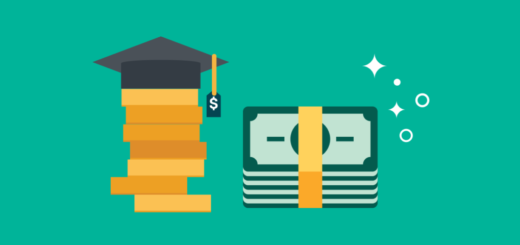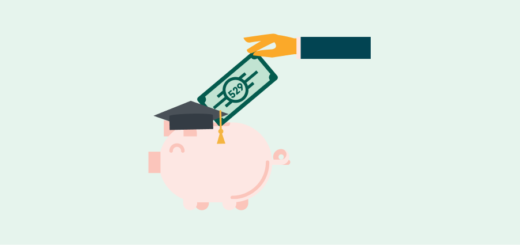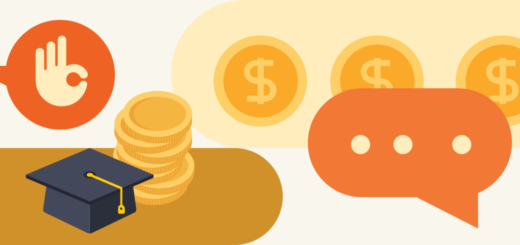What to Know About the CARES Act and Student Loans
Our goal is to give you the tools and confidence you need to improve your finances. Although we receive compensation from our partner lenders, whom we will always identify, all opinions are our own. By refinancing your mortgage, total finance charges may be higher over the life of the loan.
Credible Operations, Inc. NMLS # 1681276, is referred to here as “Credible.”
The Coronavirus Aid, Relief, and Economic Security (CARES) Act of 2020 provided fast and direct financial assistance for individuals and small businesses impacted by the COVID-19 pandemic.
Part of that assistance benefitted student loan borrowers by suspending federal student loan payments, applying a 0% interest rate, and halting collections on defaulted loans.
Initially, the student loan portion of the CARES Act applied through Sept. 30, 2020, but subsequent legislation extended it several times. Currently, payments are scheduled to restart after Aug. 31, 2022.
It’s possible that the pause could be extended again.But if it isn’t, you’ll need to resume making federal student loan payments on Sept. 1.
Here’s what you need to know about the CARES Act and student loans:
Understanding how the CARES Act affects student loans
As part of the CARES Act, the U.S. Department of Education automatically paused eligible federal student loan payments and set the interest rate on those loans at 0%, effective March 13, 2020. This payment pause is known as administrative forbearance.
If your student loans are part of that administrative forbearance, you’re allowed to continue making payments. Your loan servicer will apply those payments to your principal balance once you’ve paid any interest or fees that accrued prior to March 13, 2020.
The CARES Act doesn’t apply to private student loans. But some private student loan lenders, realizing that the pandemic has financially impacted borrowers, provide options for reducing or suspending payments.
What this means for you
If you’re not sure whether or not your loans are paused, contact your student loan servicer. You can get your current student loan balance, find out who the servicer is for your federally held student loans, and get their contact information by logging into your account at StudentAid.gov or by calling the Federal Student Aid Information Center at 800-433-3243.
See Your Refinancing Options
Credible is 100% free!
What happens to existing student loans if the CARES Act pause expires?
Automatic payments won’t automatically resume for most borrowers after the pause expires, according to the Department of Education. So if your payments were set up to auto-debit from your bank account before the pause, your servicer should contact you before the pause ends to confirm whether you want to stay on auto-debit. But if you opted out of the payment pause and are currently paying via auto-debit, your payments should continue as normal.
What will change is that interest will start accruing on your student loan balance again. For most borrowers, the interest rate will be the same as before the administrative forbearance since most federal loans are fixed-rate loans.
However, your interest rate may have changed if you consolidated your student loans during the payment pause. Loans made prior to July 1, 2006, may also have variable interest rates since interest rates on federal student loans weren’t fixed prior to that date.
Congress sets Interest rates on federal student loans annually , so the rate you’ll pay depends on the type of loans you have and the year your loans were disbursed. You can find current and previous years’ interest rates on federal student loans on the Department of Education’s website.
Interest rates hit all-time lows during the pandemic, but student loans disbursed this year — at least through July 1, 2022 — will carry higher interest rates. For undergraduate Direct Subsidized and Unsubsidized Loans, the current interest rate is 3.73%. For graduate and professional students with Direct Unsubsidized Loans, the interest rate is 5.28%, and for parents, graduate students, and professional students with Direct PLUS Loans, the interest rate is currently set at 6.28%.
The table below shows federal student loan interest rates for the coming academic year and the past three years.
| Academic year | Direct Subsidized Loans | Direct Unsubsidized Loans | Direct PLUS loans |
|---|---|---|---|
| 2022-2023 | 4.99% | Undergrad: 4.99%
Graduate and professional: 6.54% |
7.54% |
| 2021-22 | 3.73% | Undergrad: 3.73%
Graduate and professional: 5.28% |
6.28% |
| 2020-21 | 2.75% | Undergrad: 2.75%
Graduate and professional: 4.30% |
5.30% |
| 2019-20 | 4.53% | Undergrad: 4.53%
Graduate and professional: 6.08% |
7.08% |
What this means for you
It’s important to make sure your loan servicer has your current contact information . That way, they can inform you when it’s time to start making payments again and help you set your payments up on auto-debit.
It’s also a good idea to take another look at how student loan repayments will fit into your budget. If you’re concerned about being able to afford your student loan payments after the pause ends, you may be able to lower your monthly payment by enrolling in an income-driven repayment (IDR) plan, where payments are based on your income and family size.
If you have private student loans, refinancing may help you reduce your interest rate or lower your monthly payments. Our refinance calculator below can help you understand how refinancing can affect your student loan payment and interest.
Step 1. Enter your loan balance
Step 2. Enter current loan information
Step 3. Enter your new loan information to start calculating your savings
If you refinance your student loan at % interest rate, you can save will pay an additional $ monthly and pay off your loan by . The total cost of the new loan will be $.
What happens if the CARES Act pause is extended again?
If the federal government extends the pause without making changes, you won’t have to take any action to get the continued deferral — it’ll be automatic.
The Department of Education also sent letters to human resource departments instructing them to stop wage garnishments on defaulted student loans during the administrative forbearance. If it receives funds from a garnishment during the pause, it’s supposed to refund wages to the individual.
Learn more: Student Loan Wage Garnishment: What You Need to Know
What this means for you
If the CARES Act student loan relief is extended again, it may make sense to continue making payments on your federal student loans anyway.
With your loans carrying a 0% interest rate, all your payments will go toward paying down the principal, which could shorten your repayment time and mean less interest once the pause ends.
You also have the option of refinancing your student loans. Now might not be the best time to refinance federal student loans for several reasons:
- Interest rates are on an upswing after reaching historic lows during the pandemic, so you may not qualify for a lower interest rate.
- Refinancing federal student loans into a private loan means giving up valuable protections, such as access to income-driven repayment plans, deferment, forbearance, and loan forgiveness options.
- Private student loans are still charging interest, whereas interest rates on federal student loans are at 0% through Aug. 31, 2022.
- During an April 2022 interview, White House Press Secretary Jen Psaki indicated that between now and August, the pause on federal student loans would either be extended again, or the federal government would act to cancel federal student loan debt.
For these reasons, if you have federal student loans, a “wait and see” approach may be the smartest move.
Learn more: Income-Driven Repayment: Which Plan Should You Choose?
Do paused months still count toward PSLF?
The Public Service Loan Forgiveness (PSLF) Program forgives student loans for borrowers who work in public service, make 120 payments toward their loans, and meet other qualifications.
If you’re currently working toward Public Service Loan Forgiveness, you may wonder whether paused payments count toward your PSLF commitment. The good news is, paused payments do count toward PSLF as if you actually made a payment, provided you meet the other program requirements.
With student loan payments paused from March 2020 to August 2022 (currently), that’s potentially months of no payments for which you’ll get credit as though you’d made monthly payments.
Paused payments also count toward the nine payments required for a student loan rehabilitation arrangement.
Check out: Public Service Loan Forgiveness
What this means for you
Having months without payments count toward PSLF and loan rehabilitation is a significant opportunity for federal student loan borrowers. If your student loans are in default status and you haven’t started the process of rehabilitating your loans, you should consider doing so during the pause.
But keep in mind that depending on when you start your agreement, you may not get credit for all required payments by the end of the pause. Plus, it’s important not to count on the student loan pause being extended again and ensure you can make the remaining required payments after the pause ends.
- Working full-time for a U.S. federal, state, local, or tribal government or not-for-profit organization
- Having Direct Loans (or consolidating other federal student loans into a Direct Loan)
- Being on an income-driven repayment plan
- Certifying your employment every year and when you change employers
- Making 120 qualifying payments
Emergency assistance for student loans
The Department of Education allows federal student loan servicers to grant special circumstances of relief for loans that don’t automatically qualify for administrative forbearance. Examples include loans made under the Federal Family Education Loan Program (FFELP) and federal Perkins loans held by private lenders or schools rather than the Department of Education.
The borrowers can continue to apply for income-driven repayment or emergency forbearance.
What this means for you
If your student loans don’t automatically qualify for the payment pause and you’re having trouble making payments, contact your loan servicer to discuss your options.
If you have Perkins or FFELP loans that aren’t held by the Department of Education, you may be able to convert them into a federal Direct Consolidation Loan, which would be eligible for the automatic pause. They would also be eligible for an income-based repayment plan or PSLF.
If you have federal student loans that aren’t eligible for PSLF, and you wouldn’t benefit from an income-driven repayment plan, refinancing into a private loan could allow you to lower your interest rate, change your repayment term, or get a smaller monthly payment. Try our student loan refinance calculator below to see if refinancing would benefit you.
Step 1. Enter your loan balance
Step 2. Enter current loan information
Step 3. Enter your new loan information to start calculating your savings
If you refinance your student loan at % interest rate, you can save will pay an additional $ monthly and pay off your loan by . The total cost of the new loan will be $.
Does refinancing make sense for you?
Compare offers from top refinancing lenders to determine your actual savings.
Checking rates won’t affect your credit score.




